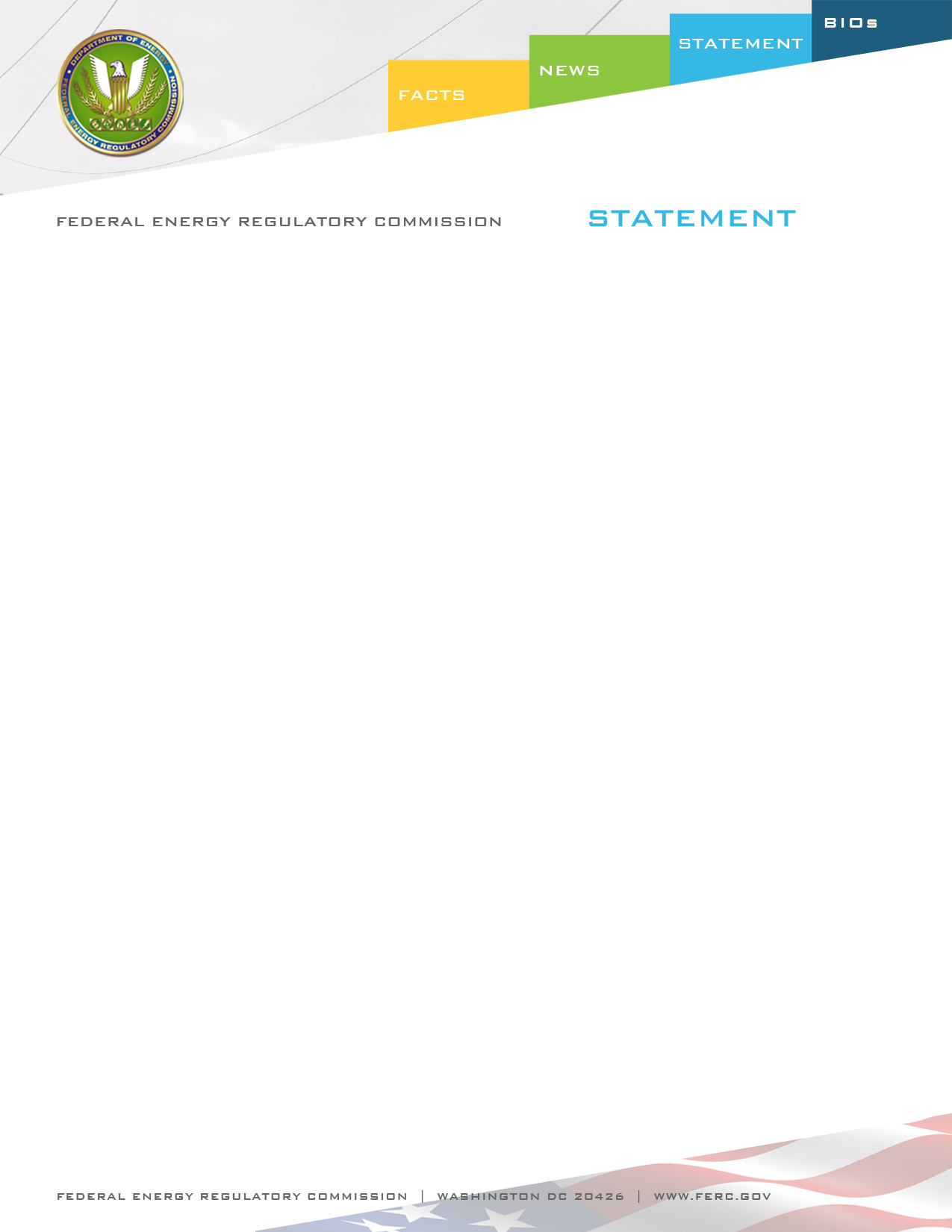Commissioner Moeller's Statement
MoellerStatement20110721-4009.doc
FERC-917 (RM10-23 [Final Rule]), & FERC-917 (Non-discriminatory Open Access Transmission Tariff) & FERC-918 (Information to be Posted on OASIS & Auditing Transmission Service Information)
Commissioner Moeller's Statement
OMB: 1902-0233


Docket
Nos. RM10-23-000
Item No. E-6
July
21, 2011 Commissioner
Philip D. Moeller
Statement of Commissioner Philip D. Moeller on
Transmission Planning and Cost Allocation
“While I offer substantial praise for today’s final rule, the Commission should have taken a different approach to several important issues. We must recognize that all of the nation’s difficulties in building needed transmission will not be resolved by this rule. Rather, this rule largely addresses planning for long-distance transmission lines, which is only a subset of the critical issues that are inhibiting needed investment.
This rule cannot address issues like the delays caused by other federal agencies in the siting of important projects, as this Commission lacks the legal authority to require other federal agencies to act. For example, see the comments of PJM in this proceeding at p. 17, which state that:
[t]he PJM Board approved the Susquehanna-Roseland 500 kV line in 2007. The Susquehanna-Roseland line was approved by the state regulatory commissions in Pennsylvania and New Jersey for 2012. The line is currently delayed by the National Parks Service [sic] and is not expected to be in service until 2014 at the earliest.
And this rule also cannot address issues of state law, regardless of the reliability needs that are served by a new transmission line. Moreover, this rule did not address whether a transmission provider can thwart competitive options by refusing to upgrade its transmission system. For these reasons, this rule will not resolve all of the difficult issues that discourage this nation from constructing needed transmission lines.
Regarding the issues that the final rule does address, I believe that the owner of a transmission network should have been provided with greater flexibility to ensure the reliability of its own network. Moreover, the rule should have clarified that a right of first refusal is not a right of “forever” refusal. That is, a right to “forever” block a needed transmission project could prevent the lowest-cost power from reaching consumers.
New transmission lines can sometimes be the lowest-cost way to improve the delivery of electricity. By building needed transmission, our nation’s transmission network can be maintained at reliability levels that are the envy of the world, while simultaneously improving consumer access to lower-cost power generation. Plus, a well-designed transmission network can allow efficient and cost-effective renewable resources to compete on an equal basis with traditional sources of power. While today’s rule moves us forward to achieve those goals, a different approach would have been better on these issues.”
| File Type | application/msword |
| File Title | Headline |
| Author | Diane E. Bernier |
| Last Modified By | Ellen Brown |
| File Modified | 2011-07-21 |
| File Created | 2011-07-21 |
© 2026 OMB.report | Privacy Policy